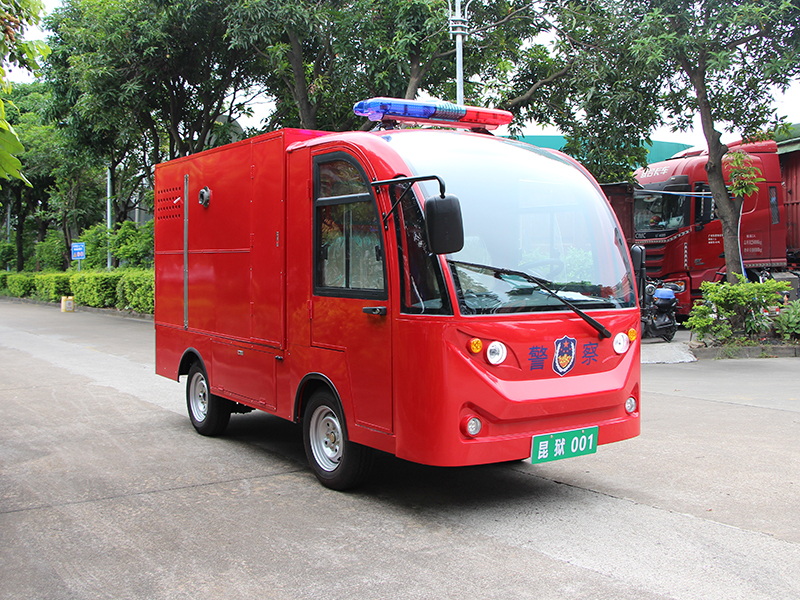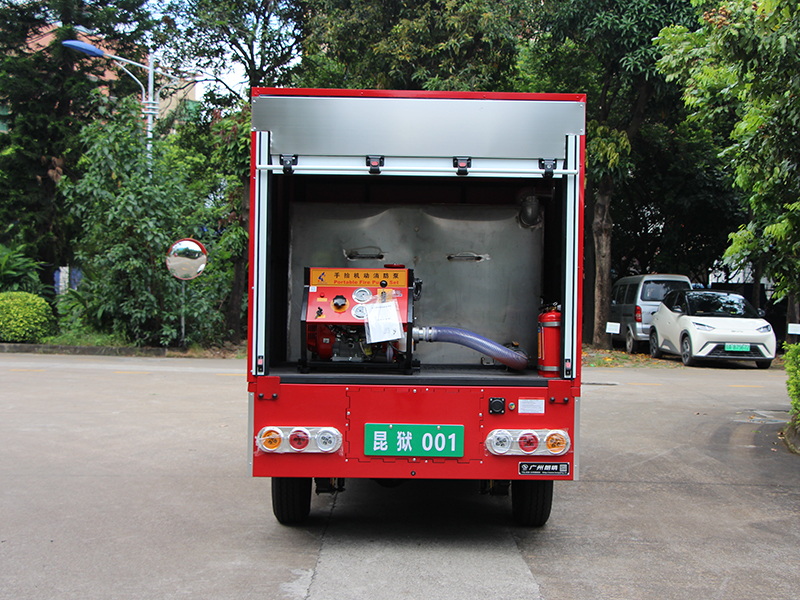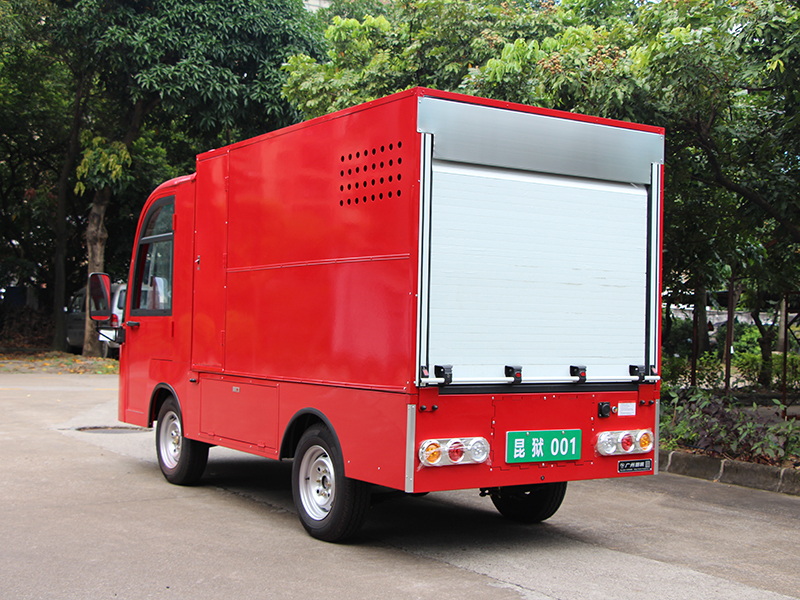Content Menu
● Introduction to DocGo Electric Ambulances
● Technical Specifications and Features of DocGo Electric Ambulances
● Current Deployment Locations of DocGo Electric Ambulances
>> United States Deployments
>> United Kingdom Deployments
● Benefits of DocGo Electric Ambulances
>> Environmental Benefits
>> Cost Savings
>> Improved Patient and Crew Experience
>> Operational Efficiency
● Challenges and Future Outlook
>> Initial Investment and Infrastructure
>> Range Limitations
>> Training and Integration
>> Future Technologies
● Conclusion
● FAQ
>> 1. What makes DocGo electric ambulances different from traditional ambulances?
>> 2. Where are DocGo electric ambulances currently operating?
>> 3. How far can a DocGo electric ambulance travel on a single charge?
>> 4. How long does it take to charge a DocGo electric ambulance?
>> 5. What is DocGo's goal for its ambulance fleet?
DocGo, a pioneering mobile healthcare and medical transportation provider, has taken a bold step in revolutionizing emergency medical services by introducing all-electric ambulances. As part of its commitment to sustainability, innovation, and improved patient care, DocGo's electric ambulances represent a significant advancement in green healthcare transportation. This article provides a comprehensive overview of where DocGo electric ambulances are currently being deployed, their technical features, operational benefits, challenges, and the broader impact on the healthcare and emergency response sectors.

Introduction to DocGo Electric Ambulances
DocGo has made history by launching the nation's first all-electric, zero-emissions ambulance. This initiative aligns with the company's ambitious sustainability goals, including a plan to transition its entire fleet to electric vehicles by 2032. The DocGo electric ambulance is designed to reduce pollution drastically—emitting only one-tenth of the pollutants compared to traditional gasoline-powered ambulances. Beyond environmental benefits, these vehicles also promise cost savings on fuel and maintenance, making them an attractive option for healthcare providers and emergency medical services (EMS).
The introduction of electric ambulances is not just about reducing emissions; it also enhances the patient and crew experience by minimizing noise and vibration, which can be critical during sensitive medical transports. DocGo's electric ambulances are equipped to provide comprehensive medical care, ensuring that sustainability does not come at the expense of quality or reliability.

Technical Specifications and Features of DocGo Electric Ambulances
DocGo's electric ambulances are built on a robust and reliable platform. The base vehicle is a Ford Transit T350 Type II chassis, which is then electrified by Lightning eMotors, a Colorado-based company specializing in electric vehicle conversions. The ambulances are outfitted with medical equipment by Leader Emergency Vehicles in California, ensuring they meet the highest standards of emergency medical care.
Key technical features include:
- Battery and Range: The ambulances are powered by a 120 kWh battery pack, delivering an estimated range of 140 to 170 miles per charge. This range is sufficient for most urban and suburban emergency and non-emergency patient transport missions.
- Charging Capabilities: The vehicle supports fast DC charging, which can fully recharge the battery in approximately 2 hours, allowing for quick turnaround times. For overnight or extended downtime, Level 2 AC charging is available, taking about 8.5 hours for a full charge.
- Powertrain: The electric motor produces 215 horsepower (160 kW), providing smooth and responsive acceleration. The top speed is electronically limited to 65 mph (105 km/h), appropriate for urban and highway driving conditions.
- Interior Design: The ambulance interior is designed for maximum comfort and functionality, featuring increased headroom, dual rear wheels for stability, and an extended body length to accommodate medical equipment and personnel comfortably.
- Medical Equipment: Fully equipped with stretchers, oxygen delivery systems, advanced life support tools, and communication devices, the ambulances ensure that patient care standards are maintained or enhanced.
- Zero Emissions: The electric powertrain produces no tailpipe emissions, contributing to improved air quality in urban areas and reducing the carbon footprint of emergency medical services.
Current Deployment Locations of DocGo Electric Ambulances
DocGo's electric ambulances are currently deployed in multiple locations across the United States and the United Kingdom, reflecting the company's strategic approach to scaling this innovative technology.
United States Deployments
- New York: DocGo's electric ambulances have been introduced in New York City as part of the company's Zero Emission Initiative. The first patient transport using an all-electric ambulance was celebrated at a major New York hospital, marking a milestone in sustainable healthcare transportation. The deployment focuses on last-mile mobile health services and non-emergency patient transport, helping reduce the environmental impact in one of the nation's most densely populated cities.
- Pennsylvania: The state of Pennsylvania has been an early adopter of DocGo's electric ambulance technology. The first all-electric ambulance patient transport took place at Jefferson Abington Hospital in Montgomery County. This pilot program is part of a broader rollout aimed at integrating electric ambulances into the region's EMS infrastructure. Pennsylvania's deployment serves as a model for other states considering similar initiatives.
- California: While California serves as the manufacturing and outfitting hub for DocGo's electric ambulances, the state is also a key operational area. Given California's aggressive clean energy goals and large population centers, the deployment of electric ambulances here supports both environmental and healthcare objectives.
United Kingdom Deployments
In the UK, DocGo operates through its subsidiary, Ambulnz Community Partners, which has introduced six electric ambulances into its fleet. These vehicles primarily serve the Stockport NHS Foundation Trust, providing non-emergency patient transport to and from Stepping Hill Hospital. Ambulnz Community Partners operates in 15 strategic locations across the UK, with a fleet of approximately 348 ambulances. About 8% of this fleet is now fully electric, demonstrating a significant commitment to reducing carbon emissions in healthcare transportation.
The UK deployments are aligned with the National Health Service's (NHS) broader goals to reduce carbon emissions and improve air quality. By integrating electric ambulances into their fleet, Ambulnz supports the NHS's sustainability targets while maintaining high standards of patient care.
Benefits of DocGo Electric Ambulances
The deployment of DocGo electric ambulances brings multiple benefits to healthcare providers, patients, and the environment:
Environmental Benefits
Electric ambulances produce zero tailpipe emissions, significantly reducing air pollutants such as nitrogen oxides (NOx) and particulate matter (PM) that are harmful to human health. This is particularly important in urban areas where air quality is a major concern. By replacing gasoline or diesel ambulances with electric models, DocGo helps reduce the healthcare sector's carbon footprint and contributes to cleaner, healthier communities.
Cost Savings
Electric vehicles generally have lower operating costs compared to internal combustion engine vehicles. DocGo electric ambulances benefit from reduced fuel costs, since electricity is cheaper than gasoline or diesel on a per-mile basis. Maintenance costs are also lower because electric drivetrains have fewer moving parts, reducing wear and tear. These savings can translate into more affordable patient transportation services and better allocation of healthcare resources.
Improved Patient and Crew Experience
Electric ambulances operate more quietly and with less vibration than traditional ambulances. This can reduce stress and discomfort for patients during transport, particularly those who are critically ill or injured. For EMS crews, the quieter ride and smoother acceleration improve working conditions and reduce fatigue.
Operational Efficiency
With fast DC charging capabilities, DocGo electric ambulances can be quickly recharged between calls, maintaining high availability. The range of 140-170 miles per charge is sufficient for most urban and suburban routes, ensuring that ambulances can respond promptly without range anxiety. The use of electric ambulances also aligns with future regulatory trends that may impose stricter emissions standards on emergency vehicles.
Challenges and Future Outlook
Despite the clear benefits, the adoption of electric ambulances faces several challenges:
Initial Investment and Infrastructure
Electric ambulances have a higher upfront cost compared to traditional vehicles, primarily due to the battery and electric drivetrain technology. Additionally, charging infrastructure must be installed at hospitals, EMS stations, and other key locations to support fleet operations. DocGo and its partners are actively working to address these challenges through pilot programs, partnerships, and investments in charging networks.
Range Limitations
While the current range of 140-170 miles is adequate for many missions, longer-distance transports or rural deployments may require additional planning or alternative solutions. As battery technology improves, future models are expected to offer longer ranges and faster charging times.
Training and Integration
EMS personnel require training to operate and maintain electric ambulances safely and effectively. DocGo provides comprehensive training programs to ensure smooth integration into existing operations. Additionally, emergency protocols may need to be updated to account for electric vehicle characteristics.
Future Technologies
Looking ahead, DocGo is exploring hydrogen fuel cell ambulances as a potential complement or alternative to battery electric vehicles. Hydrogen ambulances could offer faster refueling times and longer ranges while maintaining zero emissions. The company's ongoing innovation efforts position it at the forefront of sustainable medical transportation.
Conclusion
DocGo electric ambulances are currently deployed in strategic locations across the United States and the United Kingdom, serving both emergency and non-emergency patient transport needs. These zero-emission vehicles represent a transformative step in sustainable healthcare transportation, reducing environmental impact while maintaining high standards of patient care and operational efficiency. DocGo's ambitious goal to electrify its entire ambulance fleet by 2032 sets a powerful example for the healthcare and emergency services industries, promising a greener, quieter, and more cost-effective future for medical mobility.

FAQ
1. What makes DocGo electric ambulances different from traditional ambulances?
DocGo electric ambulances are powered entirely by electricity, producing zero tailpipe emissions and offering lower fuel and maintenance costs. They maintain all the medical capabilities of traditional ambulances while providing a quieter, smoother ride.
2. Where are DocGo electric ambulances currently operating?
They are operating in several U.S. states, including New York, Pennsylvania, and California, as well as in the United Kingdom through Ambulnz Community Partners, serving hospitals such as Jefferson Abington Hospital and Stepping Hill Hospital.
3. How far can a DocGo electric ambulance travel on a single charge?
DocGo electric ambulances have a range of approximately 140 to 170 miles per full charge, sufficient for most urban and suburban patient transport missions.
4. How long does it take to charge a DocGo electric ambulance?
Using DC fast charging, the ambulance can be fully charged in about 2 hours. Level 2 AC charging takes approximately 8.5 hours for a full charge.
5. What is DocGo's goal for its ambulance fleet?
DocGo aims to transition its entire ambulance fleet to electric vehicles by 2032, significantly reducing its carbon footprint and operational costs while enhancing patient care.



















































